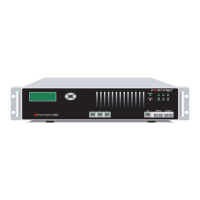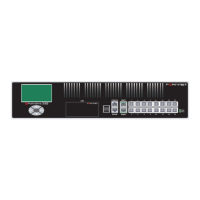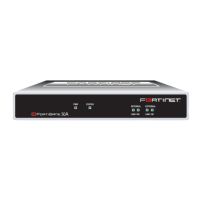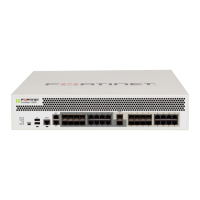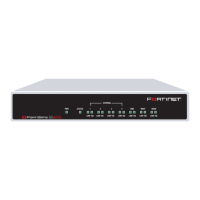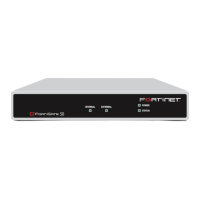9. Cautions and Warnings
Please review the following cautions and warnings.
Environmental specications
Operating temperature: Refer to the product datasheet
If you install your Fortinet product in a closed or multi-unit rack assembly, the operating ambient
temperature of the rack environment may be greater than room ambient temperature. Therefore, make
sure to install the equipment in an environment compatible with the manufacturer’s maximum rated
ambient temperature.
Storage temperature: Refer to the product datasheet
Humidity: Refer to the product datasheet
Air flow: For rack installation, make sure that the amount of air flow required for safe operation of the
equipment is not compromised.
For free-standing installation, make sure that the appliance has at least 1.5 inches (3.75 cm) of
clearance on each side to allow for adequate air flow and cooling.
FCC Compliance
FCC Compliance: Refer to the product datasheet
Operation is subject to the following two conditions:
This device may not cause harmful interference, and
This device must accept any interference received, including interference that may cause undesired
operation.
The Fortinet product has been tested and found to comply with the limits for a Class B digital device,
pursuant to part 15 of the FCC Rules. These limits are designed to provide reasonable protection against
harmful interference in a residential installation. This equipment generates, uses and can radiate radio
frequency energy and, if not installed and used in accordance with the instructions, may cause harmful
interference to radio communications. However, there is no guarantee that interference will not occur in
a particular installation. If this equipment does cause harmful interference to radio or television reception,
which can be determined by turning the equipment off and on, the user is encouraged to try to correct
the interference by one or more of the following measures:
Reorient or relocate the receiving antenna.
Increase the separation between the equipment and receiver.
Connect the equipment into an outlet on a circuit different from that to which the receiver is
connected.
Consult the dealer or an experienced radio/TV technician for help.
The equipment complies with FCC radiation exposure limits set forth for uncontrolled environments.
Caution: Risk of explosion if battery is replaced by an incorrect type. Dispose of used batteries
according to your local regulations.
Grounding
Ensure your Fortinet product is connected and properly grounded to a lightning and surge protector.
WAN or LAN connections that enter the premises from outside the building should be connected to an
Ethernet CAT5 (10/100 Mb/s) surge protector.
Shielded Twisted Pair (STP) Ethernet cables should be used whenever possible rather than Unshielded
Twisted Pair (UTP).
Do not connect or disconnect cables during lightning activity to avoid damage to your Fortinet product
or personal injury.
Electrostatic discharge (ESD) can damage Fortinet equipment. Only perform the procedures described
in this document from an ESD workstation. If no such station is available, you can provide some ESD
protection by wearing an anti-static wrist strap and attaching it to an available ESD connector or other
bare metal object.
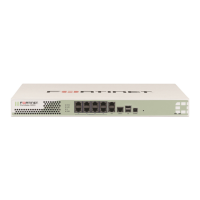
